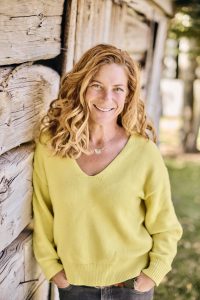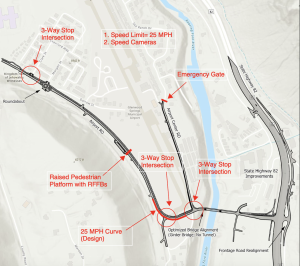Garfield Clean Energy column: Tips to stay warm and save money this winter
Garfield Clean Energy

Courtesy
There’s been a bite to the air lately, the kind you want to notice only when you step outside—not while you’re curled up at home. With winter approaching, it’s a good time to check how your home is holding up against the elements.
Protecting your home from cold, heat, water, or wind, can greatly increase comfort while lowering your energy bills and reducing your energy consumption. At Garfield Clean Energy (GCE), we provide home energy assessments and coordinate weatherization services, including discounted programs and rebates for income-qualifying residents.
But if you’re interested in a few quick DIY fixes, here are some tips for staying warm and saving money this winter.
Find where your home is losing energy
You probably already have a sense of where major drafts are coming into your home based on areas that you or your pets avoid as it gets cold. But smaller leaks can add up and really make a difference on moving the needle on your energy bill.
Before beginning your weatherization journey, assess where air leaks are occurring. Inspect exterior corners and locations where the foundation and siding meet. Inside, check for cracks and gaps at electrical outlets and switch plates, door and window frames, baseboards, window-mounted air conditioners, where your dryer vent passes to the wall, and vents. A good test for windows and doors is the daylight test: if you can see sunlight coming through the edges of a door or window, there are leaks that can be addressed.
While checking for drafts, also look at where your heating system is producing heat. Move furniture or window coverings out of the way to improve heat distribution.
Use the time of day to your advantage
Heating your home can make up nearly a third of your energy bill, so we suggest you take advantage of naturally occurring heat when you can get it. The sun at our higher altitude can provide significant warmth, so make sure your window coverings aren’t blocking Mother Nature. One way to save easy money is by thinking through when you need the heat at an optimal temperature. When away at work or sleeping, lower your thermostat. Smart thermostats are an easy way to optimize heating and cooling without having to think about it day-to-day. GCE is offering these for free to income-qualified residents with a home energy assessment as well.
Replace your furnace filter
Perhaps one of the most overlooked quick wins for energy efficiency is your furnace’s filter. Simply put, an old or dirty filter restricts airflow and makes your HVAC system work harder. Servicing them can also improve the air quality in your home. It’s recommended you check the status of your filter once a month. Filters typically range from under $10 to more than $50, depending on quality. And this is one DIY project almost anyone can do: turn off your furnace, take out the old filter, replace it with a new one, and turn the furnace back on.
Give your windows a makeover
Windows account for 20 to 30 percent of heat gain or loss in a home. Unfortunately, windows can cost a small fortune to replace and for renters, the options are limited. Instead, give your windows a fit check with heavier fabric curtains or blinds that can keep you and your family cozy and warm at night. Alternatively, cost-effective window insulation film can preserve the light and view from your windows 24 hours a day.
Block unwanted drafts
The Department of Energy estimates that 20% of airflow into the home comes from openings in windows, doors, and skylights. Addressing these air leaks, could result in energy savings of up to30% each year.
For smaller gaps, you can caulk gaps around windows, baseboards, or corners. If the gaps are large, hire a professional to block drafts with spray foam. Another simple DIY weatherstripping fix is adding a door sweep or draft stoppers. These attach to the bottom of your entry door to prevent drafts from coming through, with the added bonus of blocking noise and unwanted insects.
Safety should always come first when taking on major weatherization projects. The Department of Energy has a handy list of weatherstripping ideas, including the cost and advantages and disadvantages of each. ENERGY STAR also offers a DIY sealing and insulation guide to help ensure improvements are done safely.
Joy Hamilton is the communications manager at Clean Energy Economy for the Region (CLEER), the nonprofit that manages the programs of Garfield Clean Energy.

Support Local Journalism

Support Local Journalism
Readers around Glenwood Springs and Garfield County make the Post Independent’s work possible. Your financial contribution supports our efforts to deliver quality, locally relevant journalism.
Now more than ever, your support is critical to help us keep our community informed about the evolving coronavirus pandemic and the impact it is having locally. Every contribution, however large or small, will make a difference.
Each donation will be used exclusively for the development and creation of increased news coverage.









